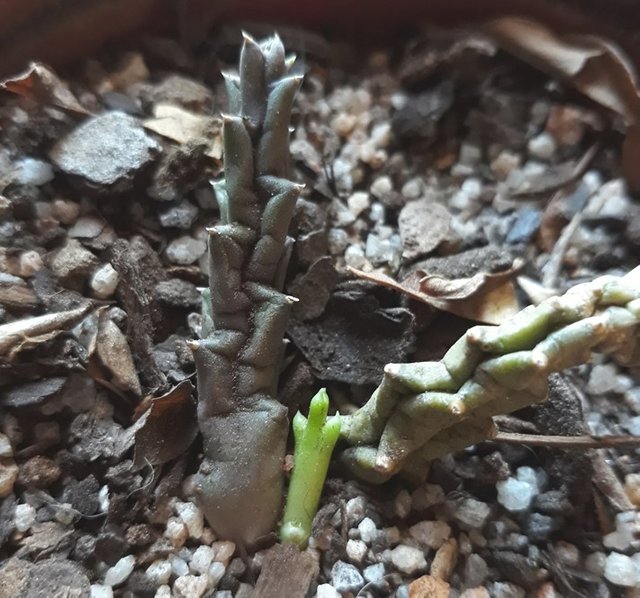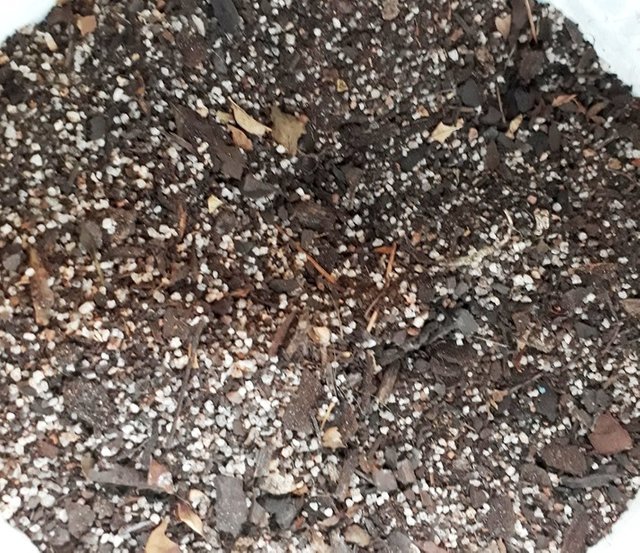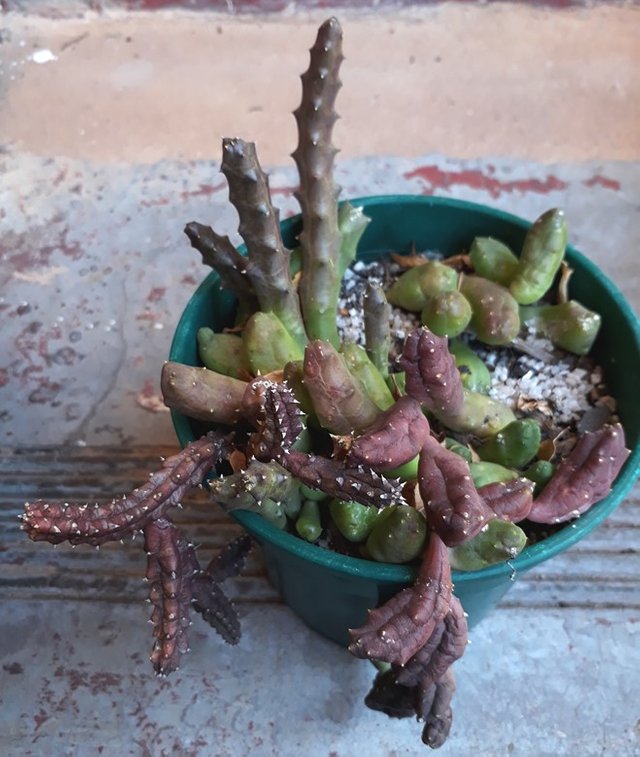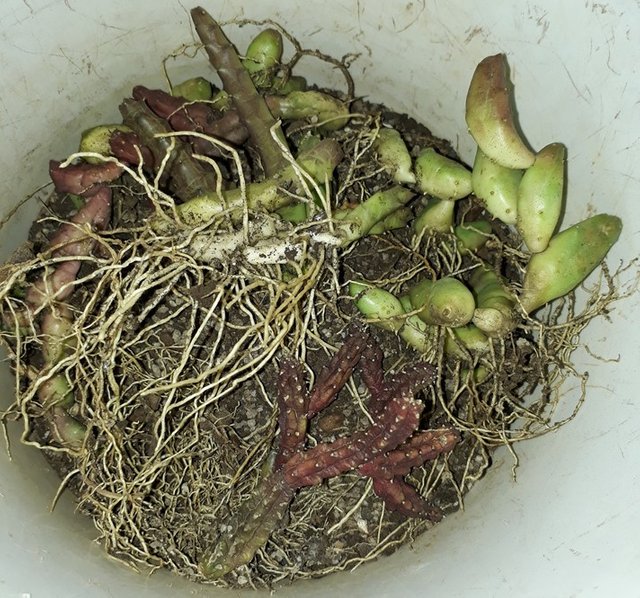Repotting stapeliads
A month or two ago, there was a large Ibis digging for grubs in the corner of my garden where I grow my stapeliads. It got a fright and flew upwards. This bird has a body the size of a large duck and a really large wingspan so it knocked quite a few of the smaller pots off the ledge. Since it was winter, time for most stapeliad species to be dormant, I didn't see the point of repotting immediately and so I picked them up and put them in a corner in the kitchen.

Now that it's spring and they are waking up, I finally got around to putting them back into a growing mix. Stapeliads have very long roots but they rot very easily so they do best in a mix that contains plenty of quartzite gravel and drains very quickly. They tend to grow under bushes in nature so I mix in a fair amount of organic Cacti and Succulent mix and some ordinary soil

Although they are looking rather dark and dehydrated, they easily get stem rot if you water them too much in cold weather. As you can see here, new roots are forming

I will start watering them now and the wrinkles will disappear and the stems will go greener
I decided to untangle this pot, which has 3 different species all fighting for space and escaping over the sides of the pot.

The tall stems at the back are Orbea variegata, the fat round ones are Piaranthus geminatus and the toothy ones are Huernia volkartii. The "teeth" on stapeliads are actually the leaves and the fat bodies are the stems
These three all ended up in one pot about two years ago, as the survivors of cold, rainy weather late in autumn which made them all get stem rot. I had to bring them inside and nurse them on a windowsill. Now they all need their own accommodation again.

The root systems were all large and healthy and completely tangled up so I had to carefully separate them all out and I will leave them to dry out for a few days before I but them back into a growing mix, this will prevent the roots from developing fungal or bacterial rot. Stapeliads need deep pots to accommodate their long root systems and they do fairly well in clay pots which allow the growing medium to dry out quickly. They dislike cold and humidity but they thrive happily in the garden in a spot which gets morning sun and they are in the shade of a tree for the rest of the day
Congratulations @nikv! You have completed the following achievement on the Steem blockchain and have been rewarded with new badge(s) :
You can view your badges on your Steem Board and compare to others on the Steem Ranking
If you no longer want to receive notifications, reply to this comment with the word
STOPTo support your work, I also upvoted your post!
Vote for @Steemitboard as a witness to get one more award and increased upvotes!
I am always surprised by the peculiar soil in which your plants grow. This is probably due to the hot climate.
Yes, but it's also similar to the underlying geology, our soils tend to be fast draining
Si necesitan ser plantadas. Mi tierra no es igual a la suya. Debo colocar al sustrato algo de abono orgánico y arena, más tierra, pero no piedritas. Voy a hacer eso, y veré que pasa.